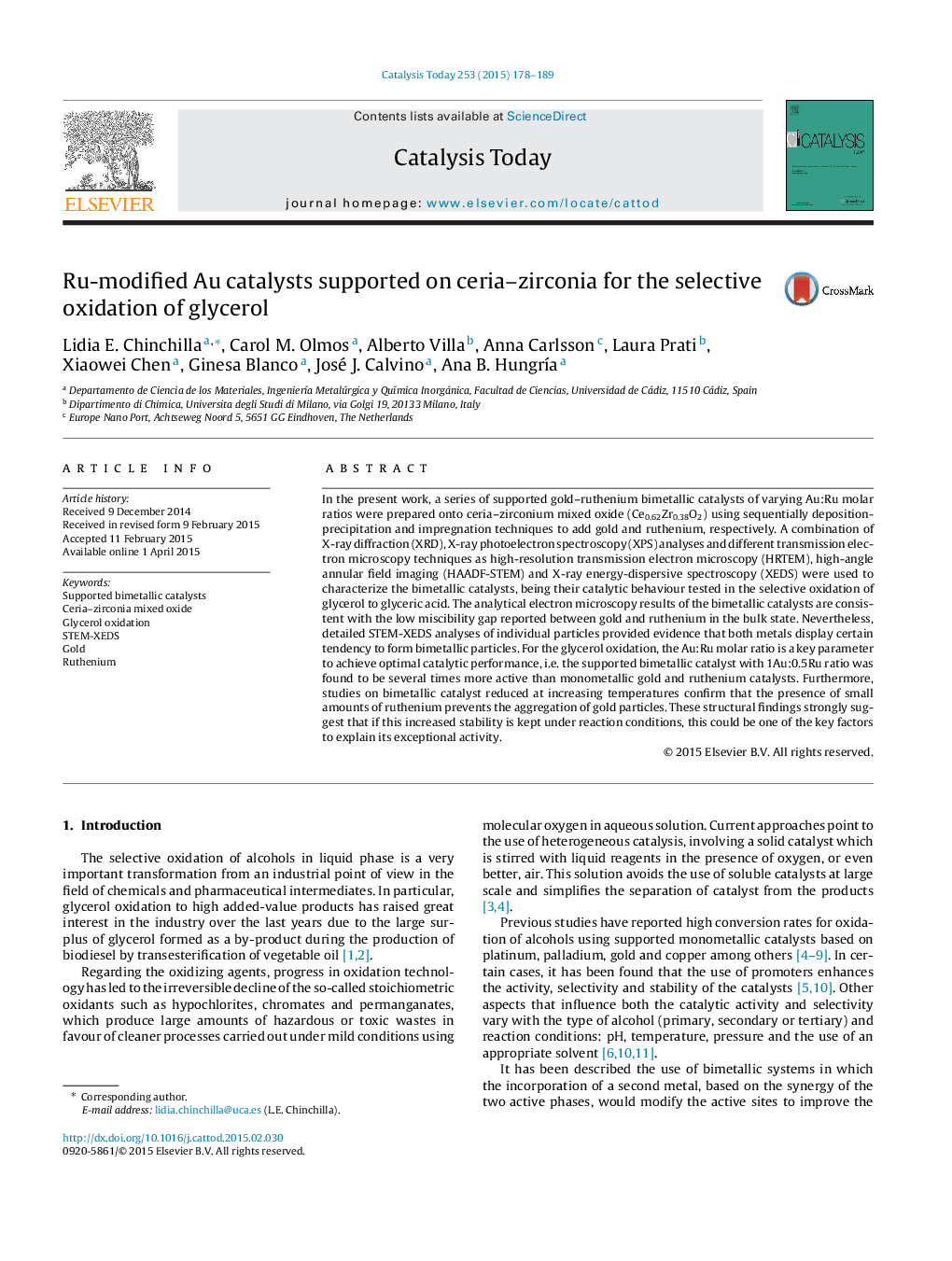| کد مقاله | کد نشریه | سال انتشار | مقاله انگلیسی | نسخه تمام متن |
|---|---|---|---|---|
| 53438 | 46969 | 2015 | 12 صفحه PDF | دانلود رایگان |

• Au–Ru bimetallic particles <5 nm have been dispersed over a ceria–zirconia support.
• A synergistic effect between Au and Ru in the oxidation of glycerol has been shown.
• The most active catalyst keeps its activity even after a deactivation treatment.
• STEM-XEDS characterization reveals the formation of particles containing both metals.
In the present work, a series of supported gold–ruthenium bimetallic catalysts of varying Au:Ru molar ratios were prepared onto ceria–zirconium mixed oxide (Ce0.62Zr0.38O2) using sequentially deposition-precipitation and impregnation techniques to add gold and ruthenium, respectively. A combination of X-ray diffraction (XRD), X-ray photoelectron spectroscopy (XPS) analyses and different transmission electron microscopy techniques as high-resolution transmission electron microscopy (HRTEM), high-angle annular field imaging (HAADF-STEM) and X-ray energy-dispersive spectroscopy (XEDS) were used to characterize the bimetallic catalysts, being their catalytic behaviour tested in the selective oxidation of glycerol to glyceric acid. The analytical electron microscopy results of the bimetallic catalysts are consistent with the low miscibility gap reported between gold and ruthenium in the bulk state. Nevertheless, detailed STEM-XEDS analyses of individual particles provided evidence that both metals display certain tendency to form bimetallic particles. For the glycerol oxidation, the Au:Ru molar ratio is a key parameter to achieve optimal catalytic performance, i.e. the supported bimetallic catalyst with 1Au:0.5Ru ratio was found to be several times more active than monometallic gold and ruthenium catalysts. Furthermore, studies on bimetallic catalyst reduced at increasing temperatures confirm that the presence of small amounts of ruthenium prevents the aggregation of gold particles. These structural findings strongly suggest that if this increased stability is kept under reaction conditions, this could be one of the key factors to explain its exceptional activity.
Figure optionsDownload high-quality image (317 K)Download as PowerPoint slide
Journal: Catalysis Today - Volume 253, 15 September 2015, Pages 178–189